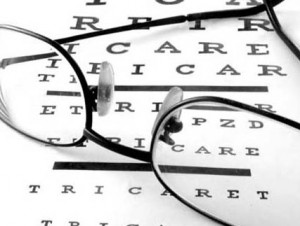
More evidence that low-calorie sweeteners are bad for your health
Studies show that artificial sweeteners can raise the risk of hypertension, metabolic syndrome, type 2 diabetes and heart disease, including stroke.

Natural Health News — A physically active lifestyle – and the occasional tipple – are associated with a reduced risk of poor vision as we age, according to new research.
Visual impairment – sight loss often caused by eye disease, trauma, or a congenital or degenerative condition that cannot be corrected with glasses or contact lenses – is associated with a poorer quality of life and, when severe, loss of independence.
To help determine ways to decrease the growing burden of visual impairment, researchers from the University of Wisconsin School of Medicine and Public Health examined the relationships between the incidence of visual impairment and three modifiable lifestyle behaviours: smoking, drinking alcohol and staying physically active.
The research, published in the journal Opthalmology was conducted as part of the Beaver Dam Eye Study, a long-term population-based cohort study from 1988 to 2013 of nearly 5,000 adults aged 43 to 84 years.
Long-term protection
The researchers found that two of the behaviours studied were protective:
Physical activity Over 20 years, 6.7% of sedentary persons and 2% of physically active persons (people who engage in regular activity three or more times a week) developed visual impairment. After adjustment for age, these figures show a 58% decrease in odds of developing visual impairment in those who were physically active compared to those who were sedentary.
Occasional drinking Over 20 years, 11% of non-drinkers (people who have not consumed alcohol within the past year) developed visual impairment while 4.8% of occasional drinkers (those who have consumed alcohol in the past year, but reported fewer than one serving in an average week) did so. After adjustment for age, these figures show a 49% decrease in the risk of developing visual impairment in those who were occasional drinkers compared to those who consumed no alcohol.
The authors don’t specify what kind or ‘drinking’ – but previous evidence suggests a protective role for the antioxidant resverarol, found in red wine.
Likewise it seems the combination of being physically active and allowing yourself the occasional drink was most protective.
Over a period of 20 years, the incidence of VI in those who drank occasionally and were physically active was 5.9% compared with 25.8% in women who had not consumed alcoholic beverages over the past year and were sedentary.
Lifestyle changes
Heavy drinkers and smokers compared to people who never drank heavily and never smoked, has a small increase in risk for developing visual impairment.
“While age is usually one of the most strongly associated factors for many eye diseases that cause visual impairment, it is a factor we cannot change,” said Ronald Klein, M.D., MPH, lead researcher of the study.
“Lifestyle behaviours like smoking, drinking and physical activity, however, can be altered. So, it’s promising, in terms of possible prevention, that these behaviours are associated with developing visual impairment over the long term. However, further research is needed to determine whether modifying these behaviours will in fact lead to a direct reduction in vision loss.”
Vision loss a growing problem
It is estimated that by 2020, the number of people in the United States with visual impairment is projected to increase to at least four million. This is a 70% increase from 2000 and is due to the growing ageing population and prevalence of age-related eye diseases.
In the UK the number of people with sight loss is also set to increase dramatically. It is predicted that by 2050 the number of people with sight loss in the UK will double to nearly four million.
Visual impairment – sight loss often caused by eye disease, trauma, or a congenital or degenerative condition that cannot be corrected with glasses or contact lenses – is associated with a poorer quality of life and, when severe, loss of independence. It develops slowly over may years most estimates suggest that around 50% of sight loss can be avoided by taking proactive steps early in life to protect it.
See our article Seeing the benefits – protecting your vision for more practical suggestions.

Please subscribe me to your newsletter mailing list. I have read the
privacy statement